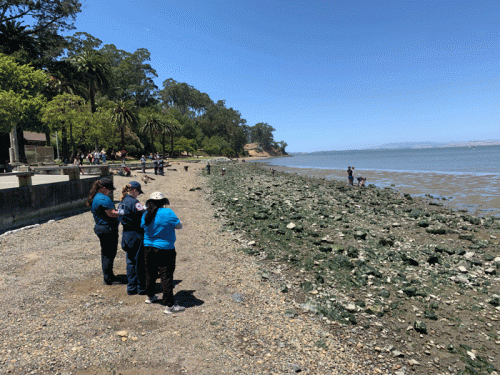SCAT Training Provided for West Coast and Pacific Islands
JUNE 27, 2022 — Among the many hats that personnel from OR&R’s Emergency Response Division wear, one of their most critical roles are instructing federal and state agencies in the art of Shoreline Cleanup Assessment Technique (SCAT) and Environmental Sensitivity Index (ESI). Preparing the U.S. Coast Guard and state spill response agencies allows for an effective incident response and protection of our nation's sensitive habitats.
In the third week of May, scientific support coordinators for the West Coast, division staff, and personnel from Research Planning, Inc. held a three-day SCAT class, which provided years of valued SCAT and ESI experience to 38 students from six Coast Guard Sectors, the U.S. Coast Guard Pacific Strike Team, and state personnel from Hawaii and California. Course topics included oil types and properties, shoreline types and characteristics, SCAT process, shoreline cleanup techniques, cleanup techniques in sensitive habitats, and valuable case studies from incidents that instructors had participated in over the years.
The course also included a field exercise, where SSCs give students hands-on experience to put their newly acquired SCAT skills to work. The field course allows students to practice SCAT skills, such as estimating distance, estimating percent oil cover, trench digging, and photographing shoreline features in a variety of shoreline settings such as sandy beaches, rocky/gravel beaches, and more sensitive habitats such as marshes and tidal flats. These classes allow OR&R to strengthen ties with the Coast Guard and state agencies, which improves the West Coast’s preparedness for future spill incidents.
For further information, contact Kyle.Vincent@noaa.gov.
 An official website of the United States government.
An official website of the United States government.

